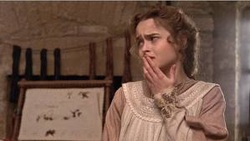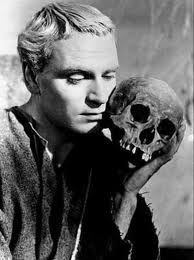When the story first began, Marquez introduces an angelic old man, quickly taken in by a man named Pelayo and his family. Marquez also shows how quickly the angel’s life is threatened by being an outcast. “’He’s an angel,’ she told them. ‘He must have been coming from the child, but the poor fellow is so old that the rain knocked him down.’” (Marquez 352). By presenting the angel as a weak old man, Marquez is able to show how Pelayo and his wife does not expect a mythological being to be so human. Even so early in the story, Marquez shows how quickly the angel is rejected for being different. “On the following day everyone knew that a flesh-and-blood angel was held captive in Pelayo’s house. Against the judgment of the wise neighbor woman, for whom angels in those times were fugitive survivors of a celestial conspiracy, they did not have the heart to club him to death.” (Marquez 325). Because Marquez depicts his angel as different from the expected and holy being with wings, Marquez shows how quickly the people are to judge.
When the story first begins, Marquez introduces an angelic old man who does not necessarily fit the usual description of an angel . Marquez also shows how quickly the angel’s life is threatened by being an outcast. “’He’s an angel,’ she told them. ‘He must have been coming from the child, but the poor fellow is so old that the rain knocked him down.’” (Marquez 352). By presenting the angel as a weak old man, Marquez is able to show how Pelayo and his wife does not expect a mythological being to be so human-like and old. Even so early in the story, Marquez shows how quickly the angel is rejected for being different. “On the following day everyone knew that a flesh-and-blood angel was held captive in Pelayo’s house. Against the judgment of the wise neighbor woman, for whom angels in those times were fugitive survivors of a celestial conspiracy, they did not have the heart to club him to death.” (Marquez 325). Though the neighbor is described as "wise" multiple times, she assumes the angel should be killed when she does not know much about him. Because Marquez depicts his angel as different than as expected, Marquez shows how quick the people judge.
 In the book Hamlet by Shakespeare, Ophelia is portrayed as naive girl who relies on her father and brother to make her decisions. Both videos show that Laertes and her father genuinely wanted Ophelia to stay away from Hamlet. Though both videos show their concern, I felt as if David Tennants version was more light-hearted and silly, when it was supposed to be serious. Both Laertes and Ophelia made jokes about his speech, and Ophelia joked about keeping her brother's advice close to heart. I feel like the Zeffirelli version of Laertes' lecture and the portrayal of Ophelia was more accurate to the book. In the video, Laertes was very serious when talking to Ophelia about staying away from Hamlet. Though both versions show concern for Ophelia's trust in Hamlet, David Tennant's version stuck closer to the truth.
 In “Hamlet” by William Shakespeare, the character that really stands out to me is Gertrude, Hamlet’s mother. In the beginning of act two, we find out that the king’s brother has passed away and he is marrying his former sister-in-law. Gertrude, the future queen does not appear to be that upset by her husband’s death, and tells her son, Hamlet, to take off his clothes meant for mourning his loss. “Good Hamlet, cast thy knighted color off,/And let thine eye look like a friend on Denmark.: (1.2 70-71). Though the queen lost her husband, she does not seem to be effected by the tragedy and claims that death is common and that Hamlet needs to move on. “Do not forever with thy vailéd lids / Seek for thy noble father in the dust. / Thou know’st ’tis common; all that lives must die, / Passing through nature to eternity.” (1.2 72-75). Not only does Gertrude seem unaffected by her husband’s death, but also begs Hamlet to stay with her instead of going to school in Wittenberg. “Let not thy mother lose her prayers, Hamlet. / I pray thee, stay with us. Go not to Wittenberg.” (1.2 122-123). Though Gertrude shows how the death of her husband means very little to her, she does not want her only son to leave her. Hamlet also notices how his mother grieved for a very little amount of time, and how the marriage between his uncle and mother was a violation of the law. “Had left the flushing in her galléd eyed, / She married. O, most wicked speed, to post / With such dexterity to incestuous sheets!” (1.2 160-164). By not caring about her husband’s death, begging her son to not go to school and violating the law by being too closely related to her future husband, Gertrude comes across as a bad queen, mother and widow.
In the short story “A Very Old Man with Enormous Wings” by Gabriel García Marquez, Marquez presents the main character as an old man who appears to be an angel. By depicting the angel as a weak and frail old man, the idea of rejecting what isn’t expected is highly highlighted throughout the story. Though the angel is classified as too human, Marquez still shows us the attraction to the mythical man by many people. By the end of the story, Marquez shows us the family being bothered by the helpful angel and the angel finally healing enough to leave.
When the story first began, Marquez introduces an angelic old man, quickly taken in by a man named Pelayo and his family. Marquez also shows how quickly the angel’s life is threatened by being an outcast. “’He’s an angel,’ she told them. ‘He must have been coming from the child, but the poor fellow is so old that the rain knocked him down.’” (Marquez 352). By presenting the angel as a weak old man, Marquez is able to show how Pelayo and his wife does not expect a mythological being to be so humanistic. Even so early in the story, Marquez shows how quickly the angel is rejected for being different. “On the following day everyone knew that a flesh-and-blood angel was held captive in Pelayo’s house. Against the judgment of the wise neighbor woman, for whom angels in those times were fugitive survivors of a celestial conspiracy, they did not have the heart to club him to death.” (Marquez 325). Because Marquez depicts his angel as different from the expected and holy being with wings, Marquez shows how quickly the people are to judge.
As the news of the angel became more widespread, the angel is seen more as a carnival act than a mythical old man. Marquez continues to show the mistreated angel being harshly judged by not appearing to look like the holy being most would expect.“Then he noticed he was much too human: he had an unbearable smell of the outdoors, the back side of this wings was strewn with parasites and his main feathers had been mistreated by terrestrial winds, and nothing about him measured up to the proud dignity of angels” (Marquez 353). Marquez continues to describe the angel as the complete opposite of the well-known holy being. By the angel possessing the characteristics of being weak, old and dirty, Marquez shows how the expectation of a “usual” angel highly contradicts with the reality of the angel in this story. Though people doubted the old man being a holy being, many people came from far away to catch a glimpse of the angel. “The news of the captive angel spread with such rapidity… Elisenda then got the idea of fencing in the yard and charging five cents admission to see the angel” (Marquez 353). Marquez shows the angel’s caregivers using the mythical man to greedily earn money.
When the angel stopped receiving visits, Marquez depicts the angel as a bother more than a blessing. The angel eventually leaves the family and they do not realize the blessings the angel has brought until he is gone, and they are faced with the reality that they should not of judged the angelic man. “They would drive him out of the bedroom with a broom and a moment later find him in the kitchen.” (Marquez 356). Though the angel provided so much to the family, they still turned him away and treated him as less than human. Marquez also shows the angel as bothersome, the family does end up realizing how the angel helped them. “…he was no longer an annoyance in her life but an imaginary dot on the horizon of the sea” (Marquez 357). Once Marquez shows that the angel finally heals, the family finally realizes that the generous angel is a blessing.
By Marquez depicting the angel with humanistic characteristics, he is able to present the idea of quickly rejecting what we don’t expect. Marquez clearly highlights this theme throughout the story, developing the angel from a weak old man to a healed mythical being. Marquez depicts the angel as different to show us how quickly we reject people who don’t necessarily fit in the expectations we set.
|



 RSS Feed
RSS Feed